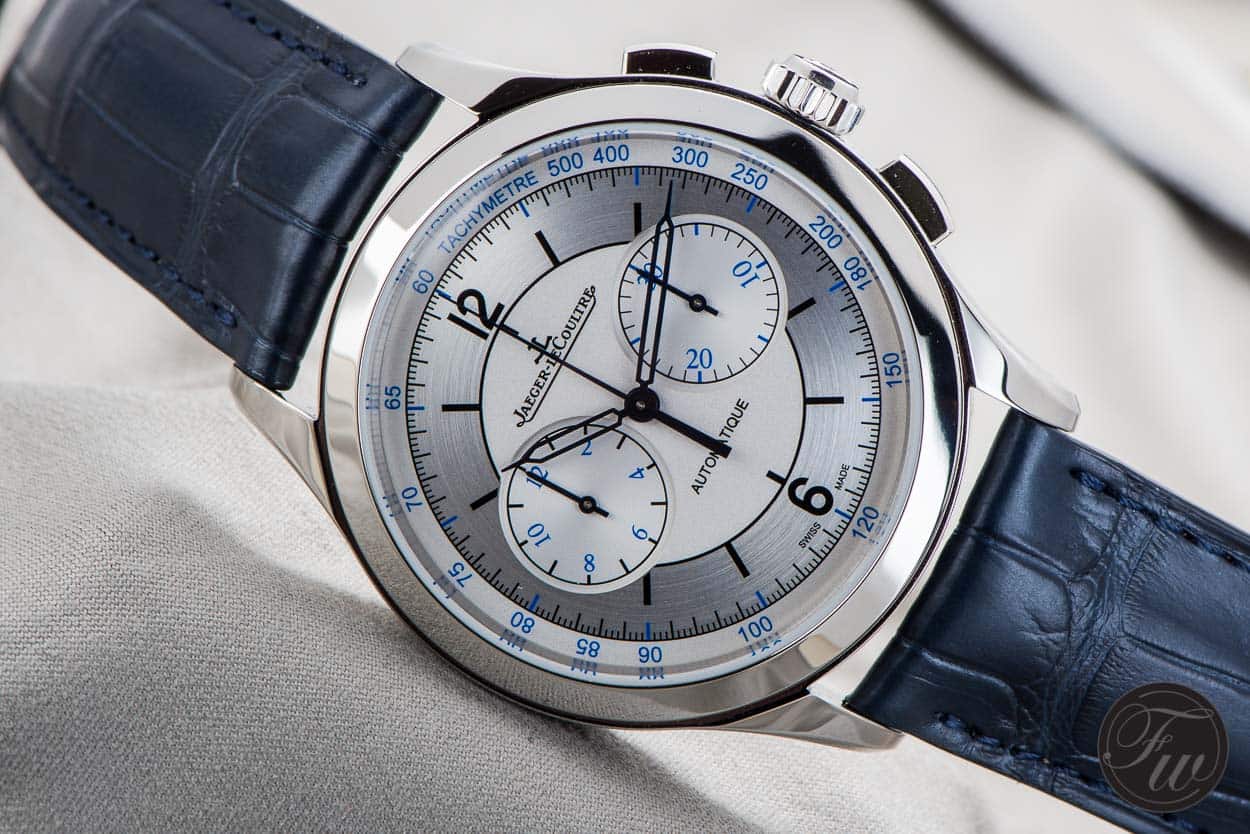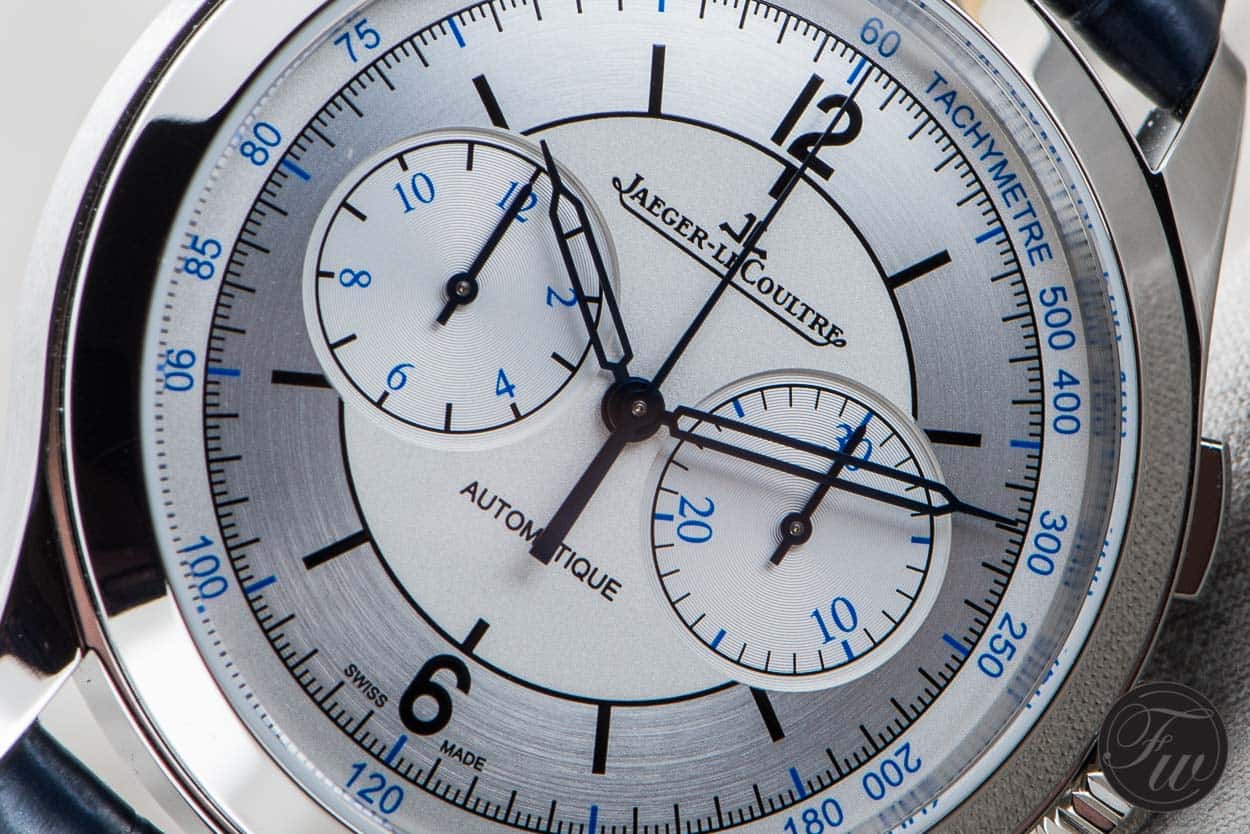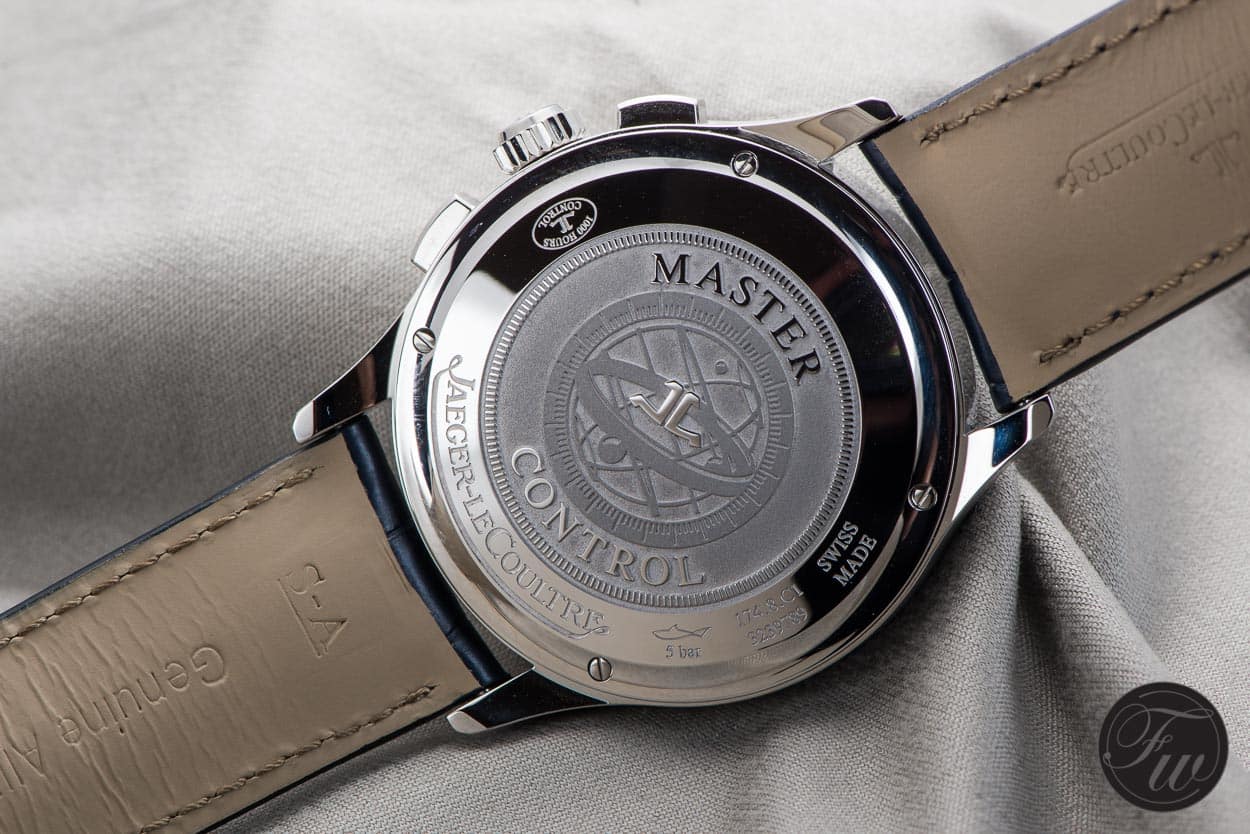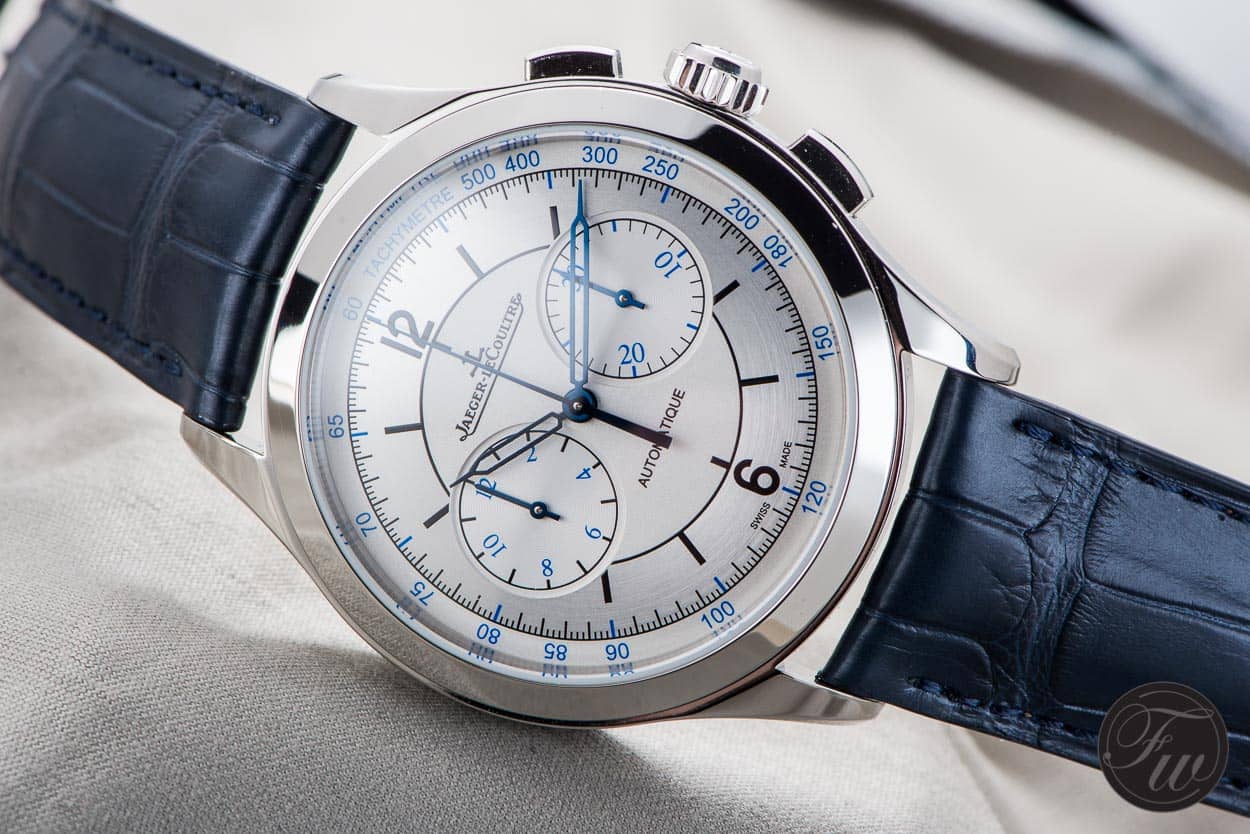Dear Jaeger-LeCoultre, Bring Back The Master Control Chronograph
Some of my fellow Fratello editors have seemingly requested (demanded?) the return of vintage models to their chosen brand’s current catalogs. I’m all for this too, but there is a slight catch. Solely relying on a nostalgic kick is fraught with danger. I enjoy a vintage reinterpretation but prefer a watch taking what it needs from the past while still moving forward. That method is essentially what Rolex has been doing for the last 30 years and it seems to be working well. My request for a watch model I’d like to see return is one that was recent yet short-lived. Like a moonflower vine that blooms two months in the year and only at night, sometimes beauty passes us by. That’s the case with the Jaeger-LeCoultre Master Control collection with sector dials. Specifically, I want to see JLC bring back its clean and elegant Master Control Chronograph.
Once universally declared as SIHH 2017’s best reveal was the sector-dial Jaeger-LeCoultre Master Control collection. Casting my mind back, what struck a nerve was the classic sector aesthetic reinterpreted for a Gen-Z crowd. It goes to show that some designs are everlasting. JLC gave us three models in stainless steel with skeletonized hands and two-tone dials, all on alligator straps. Separating each timepiece was the complication on offer. There was a time-and-date model, a GMT with city display, and today’s subject, a chronograph. The Master Control Chronograph was a two-register chronograph with timing seconds, minutes, and hours, but noticeably absent were the running seconds. Perhaps more admirably missing was also the date window.
Jaeger-LeCoultre Master Control Chronograph Sector Dial
This concise layout gave us an incredibly symmetrical and balanced dial design with only one erroneous feature — the “Automatique” text above 6 o’clock. However, this gently balances the Jaeger-LeCoultre name and logo below 12 o’clock without filling too much blank space. This more abstract look was very commendable compared to the Rolex Daytona and its long lines of text filling all possible dial space. As stated by Kristian Haagen in his book Hashtags & Watches II:
“Jaeger-LeCoultre hit the ball out of the park with their introduction of the Sector Dial Master Control models. I hope Johann Rupert bought a round or two for the designers.”
Showering high praise on the Master Control Chronograph was widespread amongst press folk. It sounds silly only five years after the launch, but then-novel aspects such as the lack of date window were a huge talking point. This was due to so many similarly supposed “vintage-inspired” chronographs unwilling to let go of incorporating a date aperture (ahem… Longines). Punching a hole through the dial can spoil the vintage illusion, as historic models often omitted the date. Admittedly, a date window is practical and can raise sales expectations. However, JLC’s dedication to elegant lines and balance demonstrates its understanding of the watch-enthusiast community.
Discontinued only after two years
Yet, despite all this praise, the Master Control Chronograph is no more. At least, as of some point in 2019, the model line of Master Control watches with sector dials disappeared from JLC’s website. That’s not to say that the models are not available in the boutiques, but manufacturing has ceased. Also, I cannot locate any examples on Chrono24 or other platforms. I find this curious, as the fanfare this watch received was beckoning a new era for JLC beyond the iconic Reverso. Whether it was down to not meeting expectations, a shift to other collections, or even a conscious effort to give it a limited lifespan, you cannot order A Master Control Chronograph direct from JLC. That leaves a rather large hole in the Master Control range without a pure chronograph.
Sure, there’s the Master Control Chronograph Calendar, which features a triple date and a moonphase. But with the calendar information, a lot is going on with the dial that distracts from the elapsed timing. On the Master Control Chronograph, running the dial’s circumference was the almost imperceptible tachymeter scale with a blue typeface matching the sub-dial numerals. If the tachy was missing, this watch could practically be a pure expression of stopwatch capabilities. However, I’m glad JLC opted to keep the tachymeter between the bezel and the dial in honor of traditional chronographs.
Functional elegance
Skeletonized hands give you unimpeded legibility by allowing the wearer to view the sub-registers at all times. Despite this, the dial and hands did not have any luminosity, so the watch was only visible with a light source. The dial also featured a variety of textures, such as the eggshell-finish silvery inner dial, a brushed steel outer dial with the hour indices including 12 and 6, and circular graining in the sub-registers. These contrasting textures gave us depth and interest to the dial and served as a distinguishing characteristic, further improving legibility. Unfortunately, the in-house 751G automatic chronograph movement was not viewable through the solid steel case back.
The Chronograph is the only model in the Master Control range that doesn’t have a sapphire display case back, and the culprit lies in the anti-magnetic protector covering the movement. Although, the attractive Jaeger-LeCoultre logo engraved on the case back partly makes up for it. Another fascinating factor of JLC’s Master Control Chrono was the comparatively great value for money. An in-house automatic chronograph movement with a 40mm steel case and a two-tone sector dial from a top-tier manufacture is reasonable at £7,300.
Final thoughts
So this leads me back to an earlier point — why discontinue the sector-dial range? I observe that JLC has attempted to create an entry-level range of round timepieces that appeals to a wide audience. We’ve seen the Master range reinterpreted many times, as well as the Geophysic True Second, and Polaris. While they vary in execution, the essential design cues of a round steel watch have persisted. This is only alarming because the sporty and experimental Master Extreme collection vanished from memory in conjunction. There’s no doubt the apparent mainstay Reverso is a tent-pole, and the ultra-high-end Hybris Mechanica keeps JLC in Haute Horlogerie territory. It’s nothing out of the ordinary for brands to continually refresh catalogs, but a consistent product offering is also beneficial. So please, JLC, bring back the Master Control Chronograph.




